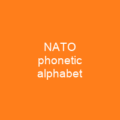The Letter S: A Journey Through Time
Imagine the letter S as a traveler, embarking on an epic journey through alphabets and languages. It’s the nineteenth letter in the Latin alphabet, used in English and many Western European languages. But what makes this humble letter so fascinating? Let’s dive into its history and explore how it has evolved over time.
The Origins of S
Back in the days when ancient scripts were being developed, S came from Northwest Semitic šîn, representing a voiceless postalveolar fricative /ʃ/. This sound didn’t exist in Ancient Greek, so they created their own letter Sigma (Σ) to represent the voiceless alveolar sibilant /s/.
The Latin Alphabet’s Evolution
When the Western Greek alphabet was adopted by Etruscans and Latins around 700 BC, it began its transformation. Over time, this evolved into various Old Italic alphabets, with the shape of S arising from Greek Σ by dropping one stroke.
The Long S: A Historical Twist
In the early medieval period, a new form called the long s (ſ) developed. This variant was used until the late 18th century and was eventually replaced by the round ‘s’ in most Western orthographies. The last use of the long s in English was seen in The Times on September 10, 1803.
Regional Variations: S in Different Languages
In English, S represents a voiceless alveolar sibilant /s/ or voiced alveolar sibilant /z/. It’s also used for plural nouns and third person present tense verbs. In German, it can represent different sounds depending on its position in the word.
The International Phonetic Alphabet
In the IPA, S represents the voiceless alveolar sibilant /s/. But that’s not all! It has a rich history of use, from representing sulfur (SO2) to indicating enantiomers in chemical names. The letter is versatile and plays a crucial role in various fields.
Diacritics and Beyond: S with Diacritics
When you add diacritics to S, it transforms into a myriad of symbols, each with its own unique meaning. From Ś ś Ṡ ṡ <|im_start|> <|im_start|> Ṩ ṩ Ṥ ṥ Ṣ ṣ S̩ s̩ Ꞩ ꞩ Ꟊ ꟊ Ŝ ŝ Ṧ ṧ Š š Ş ş Ș ș S̈ s̈ ᶊ Ȿ ȿ ᵴ ᶳ, to the subscript and modifier letter small s, each symbol tells a story of its own.
Computing and Beyond
In computing, S takes on new roles. The dollar sign ($), for instance, is often used to represent currency. And in enclosed alphanumerics, Ⓢ (S with a circle around it) can be seen as an enclosed character.
The Semitic Connection: Shin and Beyond
Interestingly, the letter S has roots in Semitic languages too. The ancient Semitic letter shin (šîn) is where many of our modern symbols derive from. From archaic Greek Sigma to Cyrillic Es (Е), each symbol carries its own history and significance.
The Enduring Legacy of S
From its origins in Northwest Semitic to its current use in computing, the letter S has traveled a long journey. It’s fascinating how this simple yet versatile letter has adapted to different languages and contexts over time. Whether you’re writing in English, German, or any other language that uses the Latin alphabet, the letter S remains an integral part of our linguistic heritage.

You want to know more about S?
This page is based on the article S published in Wikipedia (retrieved on March 7, 2025) and was automatically summarized using artificial intelligence.






